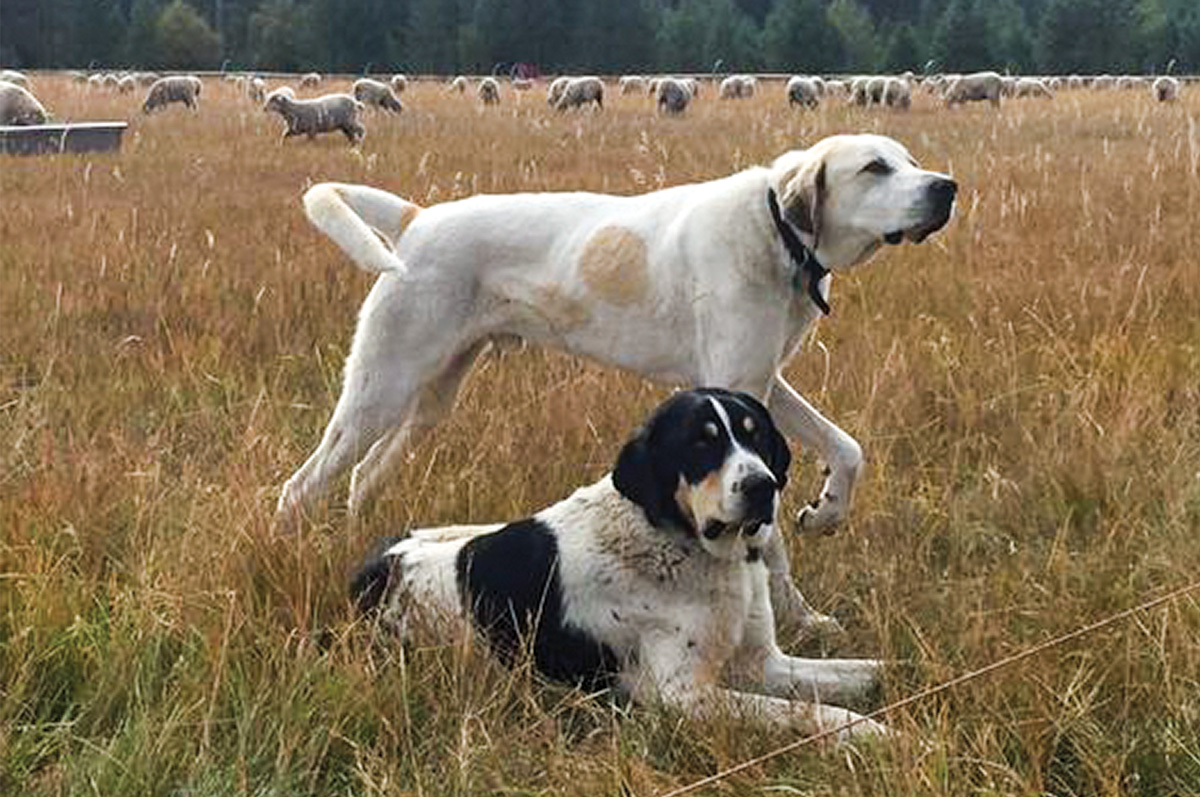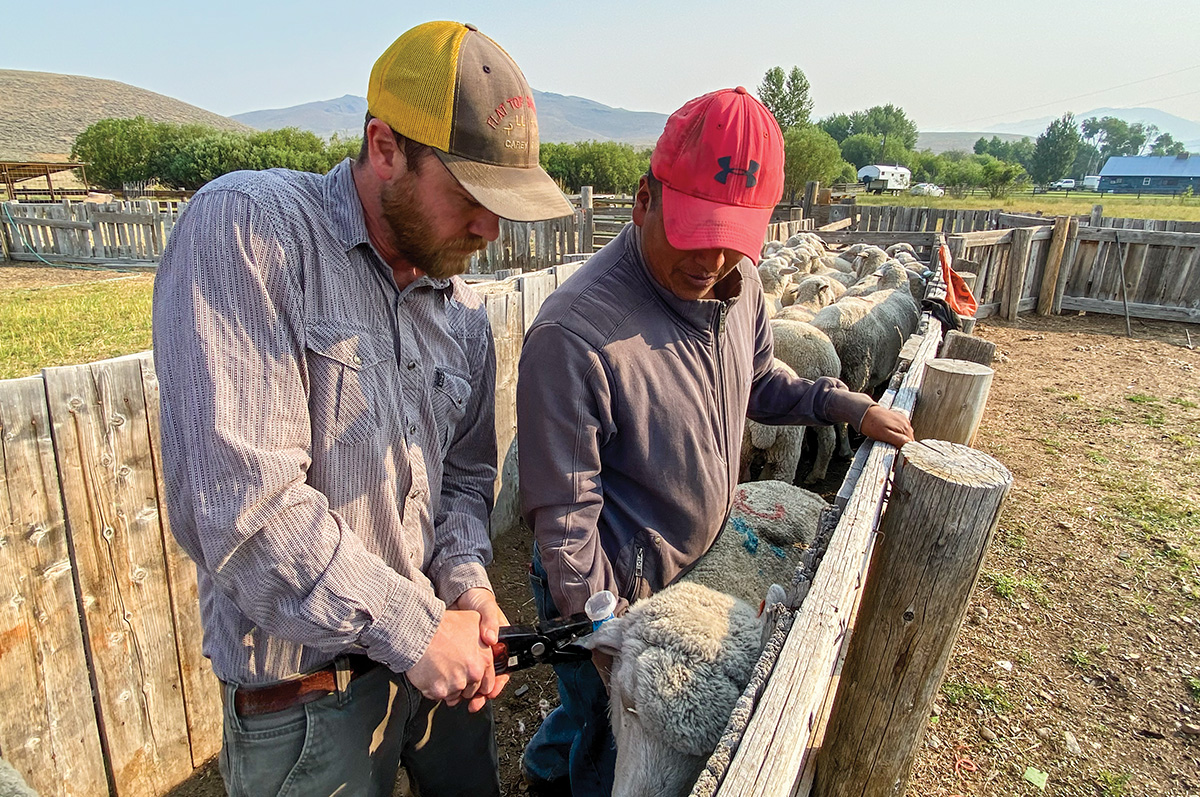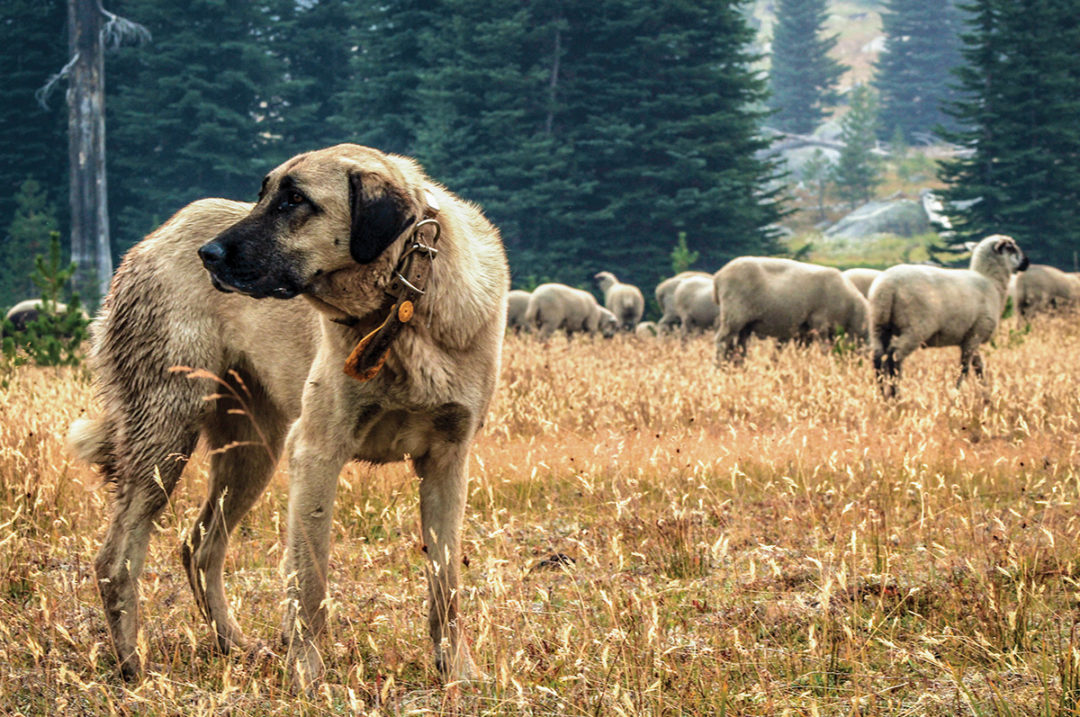There are numerous challenges to successfully raising livestock, including depredation by carnivores. Carnivores can kill, injure and stress livestock. Fortunately, there are several ways to reduce the risk of losing livestock to carnivores.
Both lethal and nonlethal actions exist to reduce depredations and injuries to livestock. Lethal carnivore removals involve M44s, livestock protection collars, aerial control, traps, shooting and denning. Each requires users to apply for special permits or to be carried out by state or federal employees. Lethal actions are not always legally available, nor are they a popular choice among the public. Nonlethal tools offer an additional set of proactive actions. Deploying nonlethal tools is legal in every state, supported by the public and cost effective. Knowing which tool works for which carnivore and in which scenarios is critical.
Livestock guard dogs and other guard animals
Livestock guard dogs (LGDs) are my favorite preventative strategy. LGDs protect livestock around the world but have mostly been used with sheep in the U.S. LGDs actively keep carnivores away from the livestock they are bonded to. LGDs can work alone, but are more effective when they live in small groups. The exact number of LGDs to use depends on the operation – too few may have trouble defending the livestock, but too many may result in LGDs becoming bored and wandering away from the livestock. Many Western sheep ranchers use three to four LGDs per sheep band.
There are 33 breeds of LGDs. The most common LGD breeds in the U.S. are Great Pyrenees and Akbash. In many cases, these breeds have been mixed. Other breeds that are excellent options include Kangal from Turkey, Karakachan from Bulgaria and Cão de Gado Transmontano from Portugal. I compared imported LGDs of these breeds placed with sheep to Pyrenees, Akbash and Pyrenees-Akbash mixes already with sheep in the U.S. and found the Kangal, Karakachan and Transmontano breeds to be more effective at reducing depredation. Some livestock owners have switched to these breeds, but others prefer to use more familiar breeds.

Identifying a reputable seller of LGDs and ensuring LGDs are properly bonded to livestock and trained on a few simple commands is important. LGDs should know their name, when to come for food and care, and not be aggressive to humans. They should be reprimanded if they chase non-carnivore wildlife, such as deer and elk, because it is illegal for dogs to chase or harass wildlife in most states. Spending a little time bonding with and training LGDs ensures a successful relationship for the owner and better protection of the livestock.
LGDs require different care and food than livestock. Dog food should be given in a certain way to avoid attracting wildlife, like bears. Thus, other guard animals that may eat the same forage as livestock and require less training may be more appropriate for some livestock producers to use instead. Llamas and donkeys are alternative guard animals for livestock owners to consider. They can subsist on the same forage and be cared for like the livestock they are protecting. These other guard animals are effective against carnivores like foxes and coyotes, but are less effective than LGDs at protecting livestock from large carnivores.
Carcass management
Carcasses attract carnivores. Removing carcasses from the landscape via burial or composting is important. Burial works if the pit can be deep enough or fenced; grizzly bears will dig up carcasses buried 6 to 10 feet deep. Burial is not an option in areas with grizzly bears, groundwater issues or frozen ground. Composting carcasses provides excellent soils after the composting process is complete but takes time, space and knowledge to do correctly. In some places, carcasses can be picked up and taken to communal composting facilities. The Blackfoot Challenge in Montana has a communal compost program to emulate.
Range riders
Range riders offer a human presence to reduce depredation by carnivores. While historically the image invoked was a cowboy on horseback, today’s range riders are more diverse. They ride horses, dirt bikes, all-terrain vehicles or mountain bikes. Some even stay on foot. Range riders may stay with one herd or visit multiple herds throughout a week, month or grazing season. Range riders are also the eyes and ears checking livestock health and forage quality. They can mend fences, herd livestock, fix water lines and monitor livestock health. Combining LGDs with range riders provides the best livestock protection; the range rider can also care for and train LGDs.
Although benefits are substantial, there are financial and time costs to using range riders. The costs may determine whether livestock owners can do this themselves, hire someone externally or work with other livestock owners to share an employee.
Fencing and fladry
Physical barriers, such as fences, virtual fences, night pens, fladry, turbo fladry and calving or lambing sheds also reduce the risk of livestock depredations by carnivores. Permanent fences can be costly to install but will pay for themselves if constructed with multiple purposes in mind. Adding a couple electric strands to new or existing fences often works well.
Fladry, a strand of 18-inch-long flags hanging 11 inches apart from a hip-height line, is an effective way to create a physical barrier. It can be set up temporarily on its own or around an existing fence line. Electrified polywire, called turbo fladry, used in this way increases longevity. Fladry lasts 60 to 120 days, so it is an excellent addition during periods when livestock are most vulnerable to predation, such as calving season or for night penning on grazing allotments.

Scare devices
Scaring carnivores helps reduce depredations. In the past, a commonly used practice was to leave a radio on near livestock to scare carnivores into thinking a human was present. A motion detector can be linked to a device that projects a series of random and loud noises, including human voices, helicopters and explosives, along with projecting flashing lights. However, carnivores may habituate to these devices quickly because they are not connected to carnivore behavior. A radio-activated guard device only turns on when a very high frequency (VHF) signal from a collar worn by a carnivore is nearby. This connects the carnivore’s behavior to negative consequences but misses carnivores not wearing collars. Soon, artificial intelligence (AI) will fix these problems. AI programs can identify which animal is in a photograph, which could soon be linked to turning on a scare device when it identifies carnivores.
Meanwhile, there are other new developments. For example, colleagues and I made a flashing eartag – a motion-activated, light-sensitive flashing LED light attached to existing livestock eartags. When livestock are harassed by a carnivore, the lights all start flashing and disrupt the carnivore’s hunting behavior. As expected, these ear tags protect livestock from wolves and coyotes but not from bears.
Other researchers painted glow-in-the-dark eyes on the back end of cows in Africa, and fewer were killed by carnivores than the eye-free cattle. Similarly, a rancher in Idaho painted eye spots on the back of existing eartags.
Even simply hazing (yelling and screaming or using rubber bullets) when a livestock owner detects a carnivore in or near livestock helps. These scare tools simply help protect the livestock when humans are not.
Other possible tools
Some nonlethal tools require implementation or assistance by other agencies and people. Habitat manipulation can help reduce risk by removing cover carnivores can hide in before killing livestock. However, extensive habitat manipulation requires permits from local, state or federal agencies. State or federal agencies may be able to translocate individual animals causing depredations. This is often considered a last resort but has been used for animals like grizzly bears.
Conclusions
Like all aspects of raising livestock, implementing nonlethal tools successfully takes practice. Resources are often available to help you get started through your local extension office, state wildlife agency, USDA Wildlife Services, county and state wildlife damage boards and nonprofit groups. Extensive information is also available online.
It is important to remember that what works in one scenario may not work in another or not work forever. Carnivores can habituate to a nonlethal tool over time. These factors should not discourage livestock owners from using nonlethal tools. Instead, it is a good reminder that it will be important to have several nonlethal tools readily available. Knowing how and when to use each will help reduce the risk of depredation, injury and stress carnivores can cause to livestock. More tools will be developed, and the savvy livestock owner will continue to try actions aimed at reducing depredation risk.








